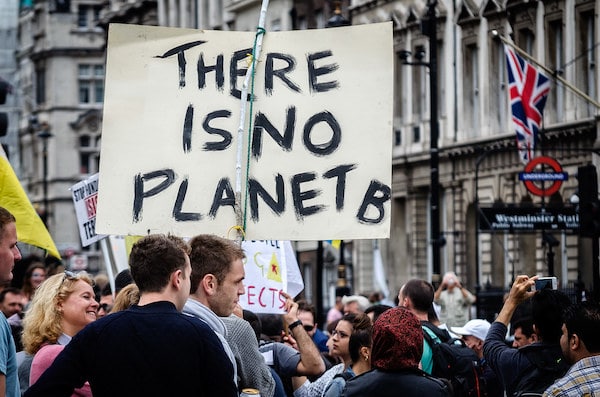There is a frenetic push to understand and address ecosystem change and biodiversity loss as drivers of pandemic virus emergence. But despite the growth of one health and planetary health concepts over the last few decades, we continue to see a minimisation of structural forces (including settler colonialism, capitalism, and globalisation) in the framing of our current ecological and climate crises and their connections to multispecies health. In particular, analyses of land tenure and land rights are barely mentioned, despite the fact that land is of vast economical and sociocultural significance and is the stage upon which human–animal–environment–pathogen interactions are played out.
Land is and means different things to different people. Indigenous, pastoralist, and rural farming communities are especially dependent on land, which is widely recognised by conservation organisations. Such communities are often uniquely vulnerable to the effects of ecosystem destruction while simultaneously having strong social norms and cultural values that support ecosystem preservation.
Most of the world’s biodiversity hotspots are also home to human communities, many of which are situated at the borderlands of national parks or within native ecosystems. Scientists have long known that these hotspots, where populations of bats, non-human primates, and other wildlife cluster, are also home to most unknown viruses and the most important terrestrial carbon reserves on the planet. Land disruptions at biodiversity hotspots are a major driver of viral spillover and contribute to climate change, but the connections between novel virus dynamics, climate, and the changing context of life for the millions of Indigenous peoples living in these hotspots are mostly overlooked, simplified, or ignored by pandemic disease research and prevention programmes.
Might this myopic approach to land and health be a hindrance to a new pluralistic and holistic way to address the roots of ecosystem disruption and, by extension, climate change and the emergence of new viruses? Despite occupying only 25% of the Earth’s surface, 80% of the world’s remaining biodiversity is stewarded by Indigenous peoples,1 and a recent UN report concluded that Indigenous peoples are the best guardians of Latin America’s forests.2 Some Indigenous communities also inhabit the rangelands that cover 54%3 of the world’s land surface,4 which is typically unsuitable for agriculture and infrastructure development (so-called marginal lands). In these ecosystems, many Indigenous peoples practice a livestock-dependent livelihood strategy: pastoralism. Under low-input pastoralist systems, the carbon cycle is commonly balanced or even negative,4 and migratory herds sustain healthy soils. In recognition of the crucial role of pastoralism to sustainable rangelands, and the importance of healthy rangelands to the resilience of pastoralist communities, 2026 is planned to be the International Year of Rangelands and Pastoralists.5
Planetary health and one health researchers should make explicit the links between land rights and health. This includes the marginalisation, exclusion, and forced displacement of Indigenous peoples, which have been shaped by colonial and postcolonial politics and economics. Such groups are often at the margins of state control and experience state incursion through systems of taxation, isolation, monetisation, commodification, and deculturation.6 But marginalisation does not mean passivity; on the contrary, Indigenous resistance movements and land defenders across the world are fighting every day to reclaim their lands and halt extractive activities.7 In Brazil, legal recognition of Indigenous forests in 2000 reduced deforestation by more than 20-fold by 2005,8 and indigenous resistance in North America has stopped or delayed greenhouse gas pollution equal to a quarter of annual emissions from the USA and Canada combined.9
Land tenure is inherently an issue of self-determination and strengthening land rights is an opportunity to restore the autonomy of marginalised ecosystem-dependent communities. Again, land is and means different things to different people and for Indigenous communities, land is inextricably connected to spiritual ways and languages, and social, economic, and legal systems.9 The issue of land tenure is thus also an issue of culture and breaking the cycle of ecological and epistemiological extraction perpetuated by settler colonialism and Western science will require the centring Indigenous voices. There are increasing examples of anticolonial health research, such as a 2021 Indigenous-led participatory research project centring Indigenous Maya concepts of health and wellbeing.10 Planetary health and one health research must adopt these frameworks both at large, and when addressing questions of land and health. Safeguarding biological and cultural diversity by securing Indigenous land rights is crucial to halting ecosystem destruction and, in turn, disease emergence and climate change.
We report no conflicts of interest.
Notes:
- ↩ FAO, The White/Wiphala Paper on Indigenous Peoples’ food systems. Food and Agriculture Organization of the UN, Rome. 2021
- ↩ Carrington D. Indigenous peoples by far the best guardians of forests—UN report. www.theguardian.com, March 25, 2021
- ↩ WWF, New data shows rangelands make up half the world’s land surface—and present a severely underutilized opportunity to address the climate and biodiversity crises. www.worldwildlife.org, March 25, 2021
- ↩ Houzer E, Scoones I, Are livestock always bad for the planet? Rethinking the protein transition and climate change debate. PASTRES, Brighton. 2021
- ↩ FAO, 42nd FAO Conference endorses the International Year of Rangelands and Pastoralists proposal!! www.fao.org. June 21, 2021
- ↩ Davis A, Sharp J, Rethinking one health: emergent human, animal and environmental assemblages. Soc Sci Med. 2020; 258 113093
- ↩ Hernandez J, Fresh banana leaves: healing indigenous landscapes through indigenous science. North Atlantic Books, Berkeley 2022
- ↩ Nepstad D, Schwartzman S, Bamberger B, et al. Inhibition of Amazon deforestation and fire by parks and indigenous lands. Conserv Biol. 2006; 20: 65-73
- ↩ Indigenous Environmental Network, Oil Change International, Indigenous resistance against carbon. www.ienearth.org Aug 2021
- ↩ Smith S-J, Penados F, Gahman L, Desire over damage: epistemological shifts and anticolonial praxis from an indigenous-led community health project. Sociol Health Illn. 2021; (published online Nov 26.) doi.org

